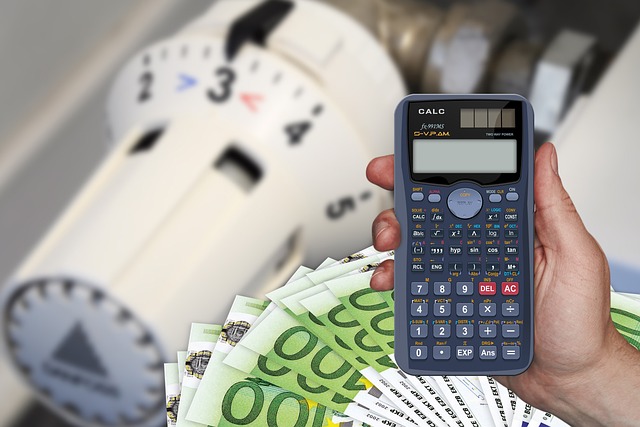Electric vehicles (EVs) are praised for their quiet operation, instant torque, and lower operating costs compared to internal combustion engines. Yet one of the most common complaints from EV owners is the gradual drop in range over time, known as range loss. While some loss is inevitable due to battery aging and changing driving conditions, many factors can accelerate the decline. This article explores the mechanics behind range loss, identifies the most frequent culprits, and offers practical service tips that can help drivers maintain their vehicles’ mileage for longer.
Understanding the Basics of Range Loss
Range loss occurs when the actual distance an EV can travel on a full charge falls below the original or advertised figure. Battery chemistry, specifically lithium‑ion cells, degrades naturally as a function of charge cycles, temperature exposure, and depth of discharge. Over years, the state of health (SOH) of a battery may drop from an initial 100 % to 80 % or less, directly impacting available range. However, not every perceived loss is purely chemical. External factors such as road conditions, weather, and driving style contribute heavily to the day‑to‑day variance in mileage.
- Battery capacity reduction due to cell aging
- Thermal management inefficiencies in hot or cold climates
- Increased resistance in aging drivetrain components
- Software constraints or misconfigurations
Common Causes of Accelerated Range Loss
While battery wear is the core driver, several service‑related factors can accelerate the decline:
- Inadequate Cooling and Heating Systems – Modern EVs rely on sophisticated thermal systems to keep battery packs within optimal temperature bands. Over time, coolant lines may develop leaks, heat exchangers can become clogged, and fans may lose efficiency.
- Worn or Misaligned Wheels and Tires – Excessive rolling resistance due to under‑inflated or unevenly worn tires forces the motor to work harder, draining the battery faster.
- Software Stagnation – Firmware and control‑unit updates often refine battery management algorithms, improve regenerative braking efficiency, and adjust powertrain parameters. Outdated software can lead to suboptimal energy usage.
- Accessory Load Mismanagement – Constant use of cabin heating or cooling, infotainment, and other accessories can quickly consume stored energy, especially if the system is not configured to use energy efficiently.
- Neglected Electrical Connections – Corrosion or loose contacts in the high‑voltage system increase resistance, reducing power delivery to the motor and adding load to the battery.
Battery Care: The Heart of Range Preservation
Battery maintenance is not as simple as keeping a fuel gauge topped up. A well‑managed battery can retain a higher percentage of its original capacity for many years. Here are the top service actions for battery care:
“Proper battery health management starts with regular diagnostics at a certified service center.” – EV Technician
- Schedule quarterly battery health checks to monitor SOH and cell balancing.
- Keep the battery pack within the manufacturer’s recommended state‑of‑charge window, usually 20–80 % for daily driving.
- Use the vehicle’s built‑in battery cooling system as intended; avoid “freezing” the battery in extreme cold by letting the car sit for long periods.
- Replace coolant or coolant additives as per the service schedule to avoid overheating.
Temperature Management: A Hidden Energy Drain
Temperature is a silent killer of range. In cold weather, the battery’s internal resistance rises, demanding more energy to reach operating temperature. In heat, the cooling system works overtime, reducing the thermal efficiency of the drivetrain. Service professionals can mitigate these effects through:
- Replacing age‑worn thermal seals and ensuring coolant flow is unobstructed.
- Upgrading to a higher‑capacity heat exchanger if the model is prone to overheating.
- Using pre‑conditioning features that warm the cabin and battery while still plugged in, sparing the battery during the drive.
Software Updates: Keeping the Brain Sharp
Electric cars are, in many respects, software‑defined machines. Firmware updates can refine everything from regenerative braking thresholds to power allocation for accessories. Service centers should always verify that the vehicle’s control units are on the latest firmware version:
- Check for updates via the manufacturer’s portal before each service visit.
- Install updates that specifically target battery management and range optimization.
- Monitor the vehicle’s energy consumption patterns pre‑ and post‑update to gauge impact.
Tires, Alignment, and Aerodynamics: Small Changes, Big Impact
Even a small improvement in tire rolling resistance can translate into a noticeable increase in range. A routine tire inspection, proper inflation, and occasional rotation keep the drivetrain efficient:
- Inflate tires to the pressure specified for maximum range, typically 30–35 psi.
- Replace tires when tread depth drops below 4 mm; worn tread increases drag.
- Adjust wheel alignment annually; misalignment adds unnecessary resistance.
- Consider aerodynamic accessories, such as low‑drag rear spoilers, to reduce lift and drag at higher speeds.
Accessory Management: Powering Up Without Overcharging
Accessories can pull a surprising amount of power. Service centers can help drivers configure their vehicles for optimal energy use:
- Enable “Eco” mode for climate control, which limits heating and cooling power.
- Use pre‑conditioning to warm or cool the cabin while the car is still plugged in.
- Schedule non‑essential charging during off‑peak hours to keep the battery at a comfortable temperature.
- Encourage the use of external power sources (e.g., portable coolers) for non‑vehicle use to preserve battery life.
Regular Maintenance: The Unsung Hero of Range
While many aspects of electric cars are self‑monitoring, routine maintenance remains essential. Service tips that can be performed during scheduled visits include:
- Checking high‑voltage connectors for corrosion and tightening as necessary.
- Inspecting the inverter, gearbox, and motor for wear indicators.
- Replacing the air filter in the cabin HVAC system to reduce load on the climate control.
- Testing regenerative braking efficiency and adjusting settings if the driver’s experience has changed.
Driving Habits: The Human Element in Range Management
Even the most advanced service tips cannot fully compensate for poor driving habits. EV owners should adopt the following practices to keep their range intact:
- Use gradual acceleration and maintain steady speeds; aggressive driving increases energy consumption.
- Plan routes that avoid frequent stops or heavy traffic where regenerative braking is less effective.
- Utilize “eco” or “comfort” modes where available to limit power output and favor battery recovery.
- Keep the vehicle’s software updated and avoid tampering with factory‑set powertrain limits.
Monitoring and Reporting: Staying Informed About Your Vehicle
Modern EVs provide real‑time data on battery health, energy consumption, and charging patterns. Service centers can help drivers set up dashboards and alerts:
- Configure notifications for significant drops in battery SOH or range.
- Track charging efficiency and identify opportunities for faster, more efficient charging.
- Use mobile apps to monitor energy usage over time and compare against previous periods.
Final Thoughts: A Long‑Term View of Range Preservation
Range loss is an inevitable part of owning an electric car, but it does not have to be a constant source of frustration. By understanding the key contributors to energy drain—battery chemistry, temperature, software, tires, and driving habits—owners can take proactive steps during routine service visits to keep their vehicles running efficiently. Regular diagnostics, timely updates, proper thermal management, and mindful driving all combine to extend the usable range and preserve the value of the vehicle over many years.
In short, while the battery’s chemistry will degrade gradually, many of the factors that accelerate range loss are manageable through disciplined service and driving practices. Staying engaged with your vehicle’s maintenance schedule and staying informed about updates from the manufacturer will keep your electric car delivering the performance and range you expect—and perhaps even exceed—when it first hit the road.




